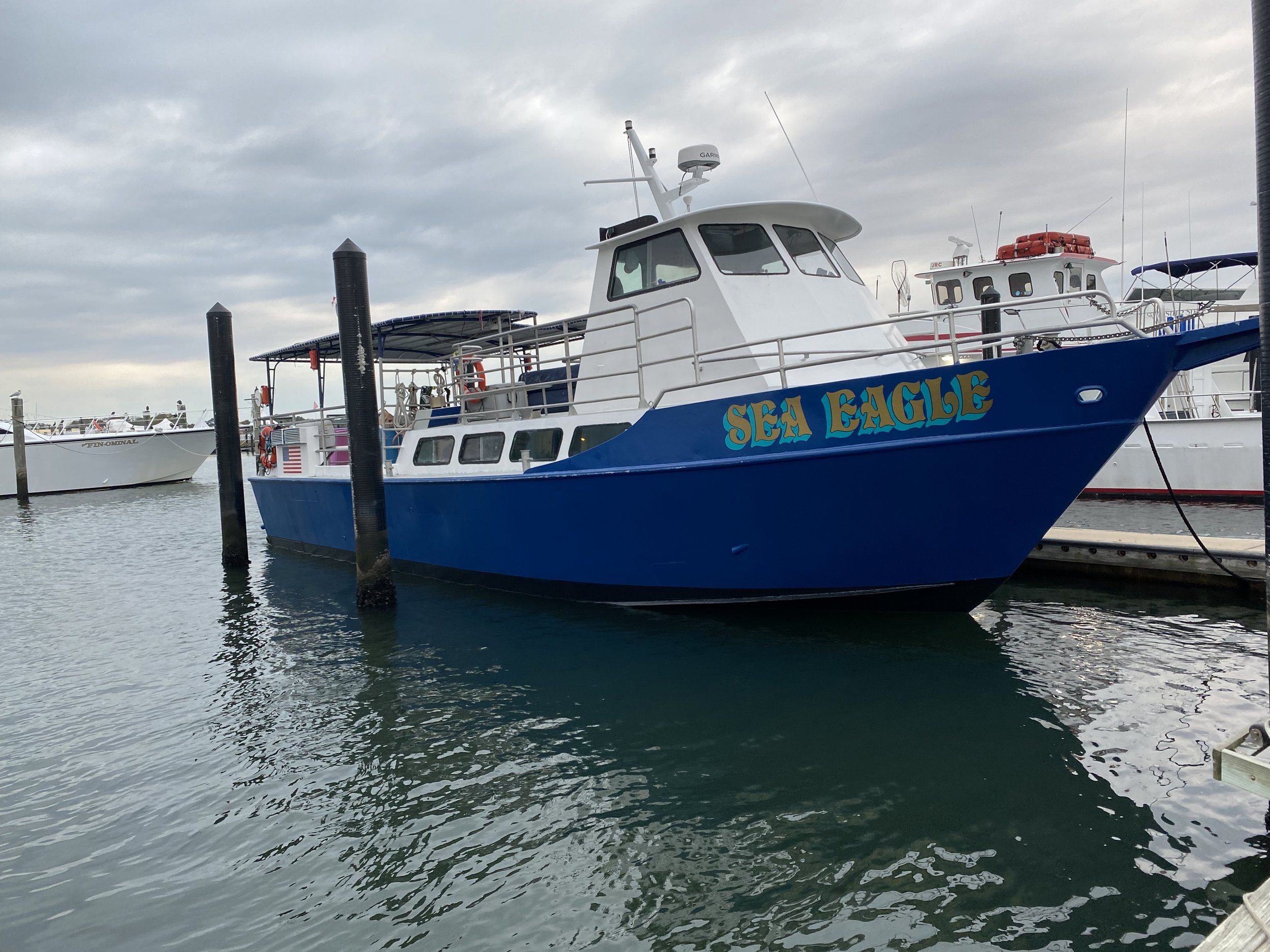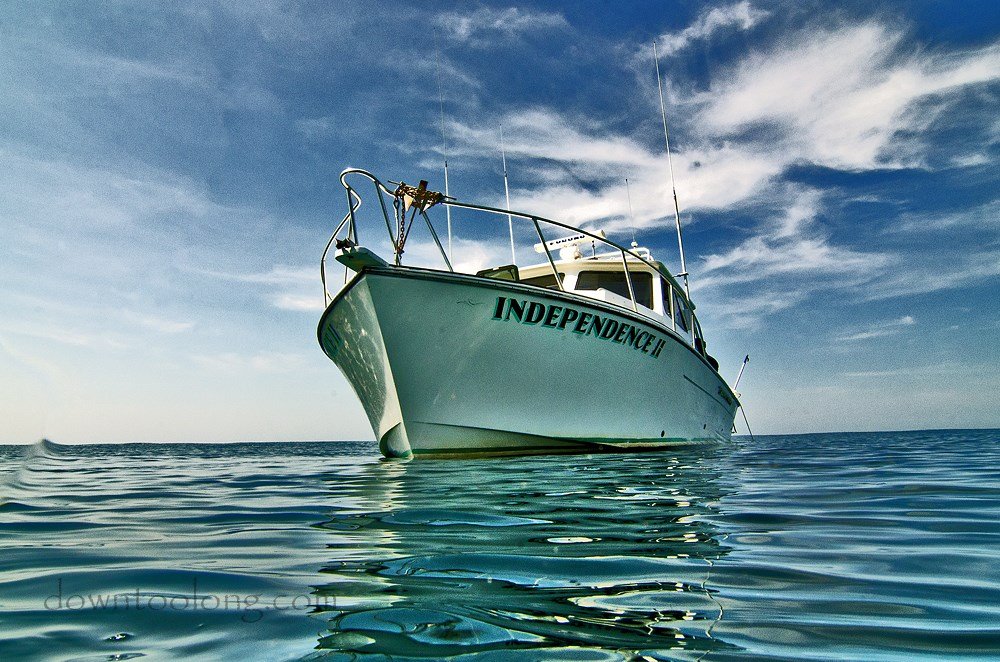

Sea Eagle Charter
The Immaculata wreck seems to be one or more wooden barges at 95 feet. Great wreck for sealife!
Set to dive the Captain's Choice!

Sea Eagle Charter
The Manasquan Ridge wrecks are old wooden schooners that lie at 80 feet. Little is known of the origins, however this is a very pretty sight with sandy, sugary bottoms. The visibility and conditions are usually very good.

Sea Eagle Charter
The Northeast Sailer Wreck is a favorite in this area and a great way to start off the diving season. At 75 feet, it is low lying and good for fish and lobsters. Off the port bow are a couple of anchors and some frames worth exploring. Astute divers will notice she carries a cargo of steam engines.
At 85 feet the Sea Girt Wreck is massive. Divers estimate she is 300 feet long - at least! An unidentified wreck, she is good for sea life, u/w photography and artifact-hunting. She carried coal as she is strewn with the stuff from bow to stern. She sports a huge anchor in her bow.

Independence II Charter
The Algol started her career in WWII and ended in more modern times. At around 450 feet in length, she offers divers a great opportunity to tour a large, deep wreck that is virtually intact. Depths to 140 but she starts at 70 feet. A great dive for all levels of offshore divers.

Independence II Charter *FULL
The wreck of the Stolt is very impressive, even though now greatly broken-up. Visibility is usually good at this wreck at 130 feet. There is a large debris field around the wreck. The propeller lies half-buried in the sand, while the broken-off rudder lies nearby.

Independence II Charter *FULL
At 80 feet, the Venturo Tug is part of the artificial reef. Mostly intact, it is great for exploration. Off her stern are a number of armored personnel carriers (APCs). Using your underwater navigation skills and gear, you can explore these "secret" structures.

Sea Eagle Charter
The wreck of the Stolt is very impressive, even though now greatly broken-up. Visibility is usually good at this wreck at 130 feet. There is a large debris field around the wreck. The propeller lies half-buried in the sand, while the broken-off rudder lies nearby.

Independence II Charter *FULL
Sunk after a collision with the Talisman in 1935, the Mohawk is a great wreck to explore. An ocean liner nearly 400 feet long and in 75 feet of water, you'll rarely see the entire wreck in a single dive. She is known as an artifact hunters wreck. China, shipboard items, and cargo have been recovered over the decades. Visibility varies, so line reels are a must-have. Keep one in your pocket or collection bag. Bring a dive light, too.

Independence II Charter
The Gulftrade lies at about 90 feet or less with some spots with elevation.She was torpedoed by U-Boats. A large picturesque wreck, so bring your wreck reels! Any artifacts would potentially be found in the debris pile.

Sea Eagle Charter
The Riggy Wreck, identified as the Barge Helen, sank in 1922 in just 75 feet of water. A wooden wreck, she is great for sea life and all-around exploration.
The Delaware is a diggers wreck. Divers have been bringing up artifacts on almost every dive. Burned to the waterline in 1899, the wreck is in 75 feet of water.

Independence II Charter
The Dykes is a partially intact wreck at her stern. The rest is open and easy to navigate. Her rudder lies just to one side. At 65 feet, she offers great exploration and sea life. She's long, too - over 300 feet!

Independence II Charter
The wreck of the Stolt is very impressive, even though now greatly broken-up. Visibility is usually good at this wreck at 130 feet. There is a large debris field around the wreck. The propeller lies half-buried in the sand, while the broken-off rudder lies nearby.
